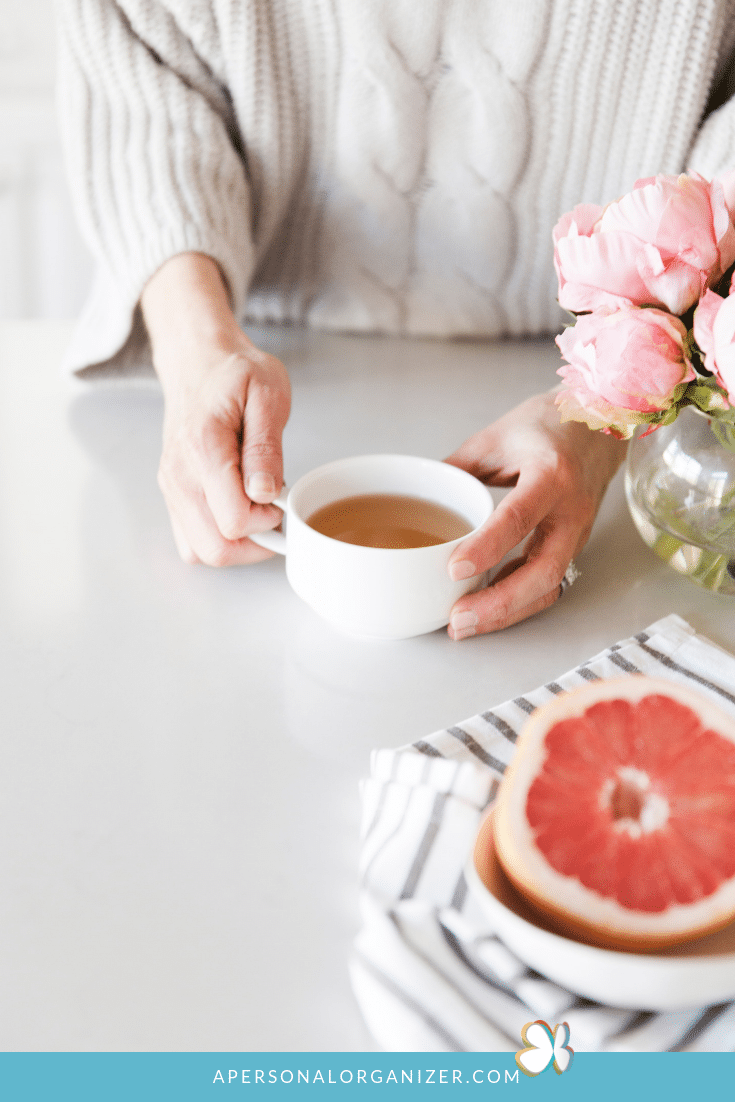This post may contain affiliate links for your convenience. As an Amazon Associate, A Personal Organizer, LLC earns from qualifying purchases.
Don’t Let the Clutter Monster Get Cozy in Your Home
Clutter usually hides in “hot spots” around your home. Areas like kitchen drawers, hard-to-reach cabinets and bottom shelves in closets end up collection zones for miscellaneous items.
This mild chaos may seem innocuous but what starts as a small dust bunny can quickly overwhelm the space in your home. That’s when most clients call me. When clutter became so big that tackling the organizing of their homes seems like a mountain they just can’t cross.
It’s hard to find the motivation to organize when the mess is so big and that’s why regularly revisiting these “hot spots” will ensure you’re eliminating what you don’t use or need anymore and using all the space in your home effectively. After all, who wants unwanted old shoes taking up valuable space?
Here are 6 steps to make a plan and get organized.

1. Identify the clutter problem
Messy areas don’t create themselves. It’s usually a symptom of a larger organizational problem. If you have a pile of clothes on the floor of your bedroom at the end of each week, it could be because the clothes hamper is too small or difficult to get to or that you are not planning your home tasks into your calendar.
2. Create a new approach
Once you identify the problem, look for a solution. If the kids take their clothes in the bathroom (and their clothes literally become a “rug” on the floor), it’s time to move the hamper out of the laundry room. Or, if the gym clothes are making the entire hamper stinky, make sure you have a breathable laundry bag just for them in another (ventilated) spot. Make it as easy as possible for you to stay organized, especially during the week when you’re most busy.
3. Tackle Clutter – Daily and Seasonally
People ask me all the time how I keep my house cleaned and organized, but sadly there’s no mystery pill: I do the work, in small bites, but it gets done. Approach it two ways:
Daily – walk around the house to pick up any item that belongs somewhere else, to toss unwanted mail, store that unfinished project and so on. Slowly your home will be free of clutter and (I promise) a lot easier to clean.
Seasonally – Schedule time during an upcoming weekend for organizing. Block the morning or the afternoon (check the weather forecast to decide) and dedicate yourself to eliminating clutter. Don’t allow interruptions to sideline your work. Turn off the TV, put your phone on vibrate and let everyone in your house know you are not to be interrupted. If they’re old enough to hang stick around and be helpful, better yet, ask them to help!
4. Should You Remove Everything First?
Take it slow so you don’t become overwhelmed. If you’re organizing your garage or a very messy closet, don’t go all out removing all the contents. You may get so tired after a couple of hours that you won’t have the energy to complete the project, which will be a drain on your motivation. But, if you’re organizing small, contained areas such as your bathroom cabinets or kitchen drawers, organize one drawer at a time. Empty each drawer or cabinet completely, placing all its contents on the counter.
5. Clean
Once the space is empty, give it a deep clean. Use the best cleaning tools for the area you’re organizing. Wipe out drawers with a damp cloth. Then lay down new cabinet lining. Dust shelves and vacuum the space with the accessory tools on your vacuum. Wood furniture should be polished with a wood-safe cleaner. Disinfect the hard-to-reach spots of kitchens and bathrooms where germs thrive.
6. Find a new space for each item
Once the space is clean, you can begin to “organize” your belongings. Put back only the items you need or want to keep in a way that fits into your new organizing strategy (step #2). Think about how everything will be used. For example, chances are you use wooden spoons every day for cooking. Those should be in a drawer that’s easily accessible. Whereas single-purpose tools like pie pans can be stored in a lower cabinet or high shelf because they are used less frequently.
Repeat this process for each area of your home that’s cluttered or disorganized. Think about how you can use your space more effectively, make a plan and then get to it.
Don’t be afraid to get creative. The more your organizing approach works for you, the easier it will be to maintain when life gets busy.






